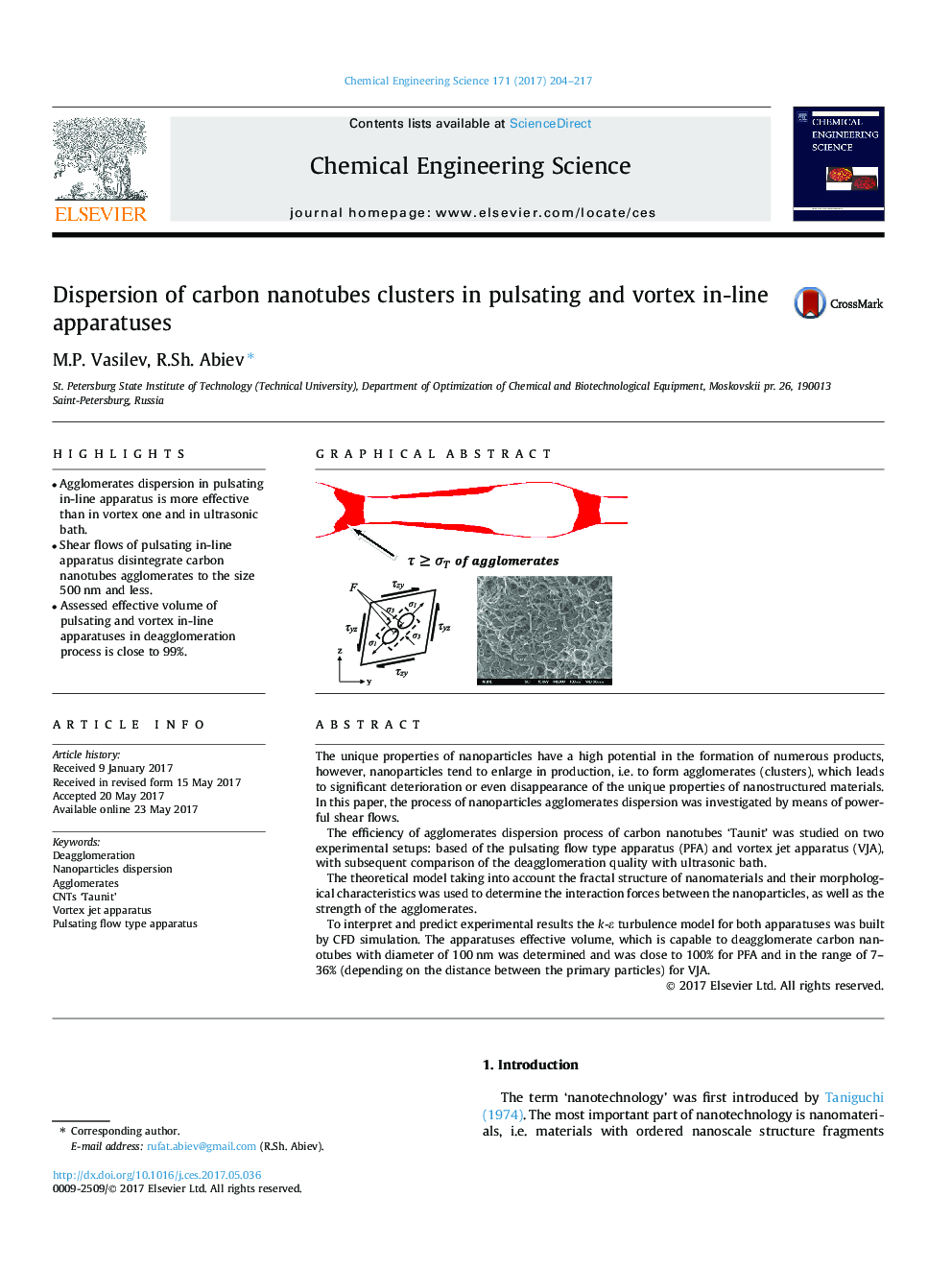| Article ID | Journal | Published Year | Pages | File Type |
|---|---|---|---|---|
| 6467078 | Chemical Engineering Science | 2017 | 14 Pages |
â¢Agglomerates dispersion in pulsating in-line apparatus is more effective than in vortex one and in ultrasonic bath.â¢Shear flows of pulsating in-line apparatus disintegrate carbon nanotubes agglomerates to the size 500 nm and less.â¢Assessed effective volume of pulsating and vortex in-line apparatuses in deagglomeration process is close to 99%.
The unique properties of nanoparticles have a high potential in the formation of numerous products, however, nanoparticles tend to enlarge in production, i.e. to form agglomerates (clusters), which leads to significant deterioration or even disappearance of the unique properties of nanostructured materials. In this paper, the process of nanoparticles agglomerates dispersion was investigated by means of powerful shear flows.The efficiency of agglomerates dispersion process of carbon nanotubes 'Taunit' was studied on two experimental setups: based of the pulsating flow type apparatus (PFA) and vortex jet apparatus (VJA), with subsequent comparison of the deagglomeration quality with ultrasonic bath.The theoretical model taking into account the fractal structure of nanomaterials and their morphological characteristics was used to determine the interaction forces between the nanoparticles, as well as the strength of the agglomerates.To interpret and predict experimental results the k-ε turbulence model for both apparatuses was built by CFD simulation. The apparatuses effective volume, which is capable to deagglomerate carbon nanotubes with diameter of 100 nm was determined and was close to 100% for PFA and in the range of 7-36% (depending on the distance between the primary particles) for VJA.
Graphical abstractDownload high-res image (156KB)Download full-size image
